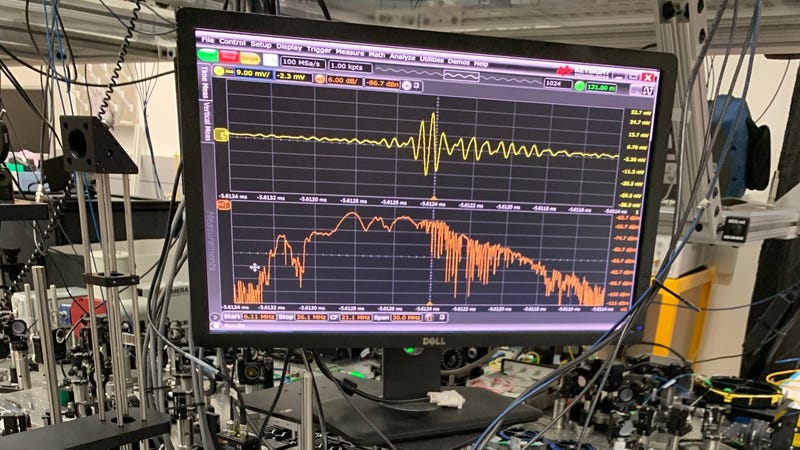
Researchers have combined laser techniques and an ingenious detection scheme in order to create a powerful new molecule-imaging system—a quicker, easier way to determine the identity of microscopic molecules. Basically, it’s an advanced yet surprisingly simple microscope.
Shining mid-infrared light on complex molecules like proteins and observing how they react can provide detailed information on their structure and the function they serve. But today, infrared sources like lasers, heaters, and particle accelerators might be missing the necessary brightness, wavelengths, or resolution, or might be too expensive, for these purposes. There are also few efficient detectors for these mid-infrared wavelengths. The group of scientists behind the project hopes to overcome these limitations with their new system.
“Developing these tools, it’s exciting to see how it can go in many different directions and open new opportunities,” study author Scott Diddams, professor adjoint and NIST Fellow at the University of Colorado, Boulder, told Gizmodo. “There’s something exciting about a physicist working with biologists using microscopy for medical analysis.”
You might remember from high school chemistry that elements absorb specific wavelengths of light. Shining light with lots of different wavelengths, and seeing which ones got absorbed, is a way to make ‘fingerprints’ that identify molecules. Biological molecules do a lot of their absorbing (or reacting in other ways) when they’re struck with light in the mid-infrared range, beyond what our eyes can see. But the mid-infrared range is an especially difficult range of wavelengths to produce in experiments and detect in detectors. This can make it tricky to determine the fingerprints of many biological molecules.

Advertisement
The researchers pass near-infrared laser pulses through a series of optics including special fibers, crystals, and gratings. This generates a broad spectrum of mid-infrared light with regularly spaced wavelengths, like the teeth of a comb—in fact, these tools are called optical frequency combs. This light hits a test sample, which absorbs some of the wavelengths while letting the rest pass through, resulting in a distinct signature or fingerprint. Then, they combine this laser with another another near-infrared laser and send the joint beam into a crystal. The mid-infrared electric field changes the polarization, or the orientation, of the near-infrared laser in a direct and predictable way that is easily measured by inexpensive detectors.
All of this fits into a tabletop-sized lab system, according to the paper published in Science Advances.
Mengjie Yu, a Harvard applied physics postdoctoral fellow not involved in the research, told Gizmodo the method could be “revolutionary beyond laboratory use” for identifying “lipids, proteins, bio-markers for breath analysis or medical use, and gas sensing for environmental monitoring of industrial control.” She was excited for the way it solved two problems: first, it extends the range of optical frequency combs into the mid-infrared, and second, it’s able to spot the normally hard-to-detect results.
Advertisement
The research might seem esoteric, but it’s a big deal when it comes to making these sorts of measurements accessible. “If you wanted comparable light sources, you’d have to go to a big user facility, get into a queue, and wait to use the light source,” Diddams told Gizmodo. “We demonstrated that you can do this in a compact, relatively easy-to-construct laboratory on a few square feet.”
https://gizmodo.com/this-compact-system-lets-scientists-see-biological-mole-1835328557Bagikan Berita Ini














0 Response to "This Compact System Lets Scientists See Biological Molecules in a Whole New Way - Gizmodo"
Post a Comment